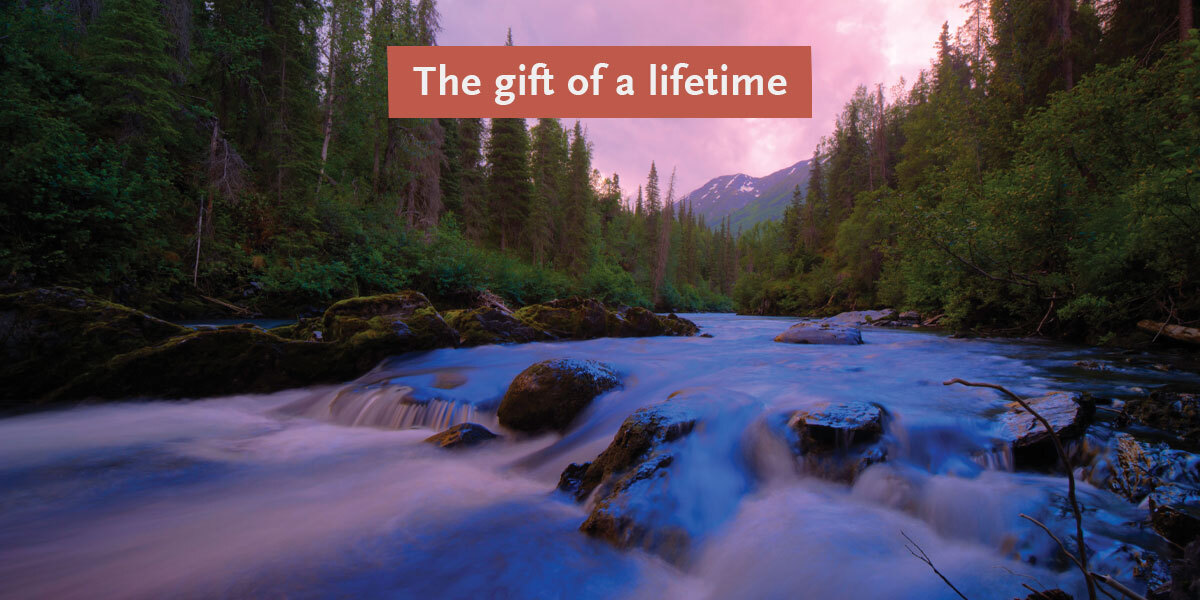WSC’s new Alaska program: going where salmon are.
Alaska is one of the most extensive and intact wild salmon regions on the planet, with nearly 60,000 miles of coastline and thousands of salmon streams. Alaska’s watersheds serve as the spawning ground for over 40% of the salmon in the North Pacific and for millennia its wild salmon runs have provided Alaskan communities with a critical subsistence resource, supported lucrative sport and commercial fisheries, and been the keystone for thriving aquatic and terrestrial ecosystems.

Wild Salmon Center has worked in Alaska for years, but given the threats to wild salmon in Bristol Bay and beyond, we have expanded our presence with an office in Anchorage and our new Alaska Senior Program Manager—Emily Anderson. Emily’s experience spans the education, law, and environmental fields, making her an excellent program and partnership builder. She has represented diverse groups ranging from Alaska Native communities to commercial fishermen.
Alaska is a huge state, but the community is small. Emily leads our effort to work collaboratively with partner organizations in Alaska and to reach out to communities in remote areas because that’s where the salmon are. WSC brings to the table our science expertise, as well as our long history of working with fisheries managers and watershed councils. With our partners, WSC will work to identify and protect key salmon rivers and streams in Alaska.
Wild salmon are the lifeblood of many rural communities. Salmon are not just food on the table; they are intimately tied to the cultural identity of Alaskan Native people and fishermen. There are few places in the world where waters visibly pulse with wild salmon. Alaska’s Bristol Bay is one of those places. Bristol Bay’s habitat has remained relatively untouched and supports healthy runs of all five species of Pacific salmon and produces the world’s largest sockeye salmon fisheries, yielding up to 40 million mature salmon each year. However, with the discovery of the Pebble deposit—one of the world’s largest known copper and gold repositories—all of this could change.
In the air and on the ground in remote Alaska
As part of our outreach on the Citizens’ Alternative, Emily recently flew into Koliganek, a village along the Nushagak River, with our partners from Trout Unlimited and Nunamta Aulukestai. Flying low in a single-engine plane to avoid the weather, they had a rare opportunity to see wild Alaska at its best and most pristine. Large stretches of the Nushagak River and the beautiful landscape opened up below them revealing free-roaming moose and herds of caribou.

There is a protocol to reaching out to remote Alaskan communities: one can not just show up uninvited and expect an audience. Fortunately, WSC and our partners were invited and warmly received. In Twin Hills, one of the smallest villages on our trip, the local tribal council chief personally went around the village to round up folks for the meeting. Our huge fruit and veggie platters brought instant smiles and nods. Salmon may be the lifeblood of these communities, but fresh fruits and veggies in Alaska —especially in the dead of winter—are a sure way to kickoff a good discussion.
The locals were very engaged as the Citizens’ Alternative strikes at the very heart of their subsistence way of life. They noted that the DNR refused to implement a “subsistence” classification and yet it recognizes a “mineral” classification, reinforcing views that they are choosing mining over salmon. Unlike our outreach efforts for the Citizens’ Alternative, the DNR did not consult with Bristol Bay residents, tribes, local governments or fishing groups before drafting its proposed amendments.
WSC will continue to work with the our partners, Alaska Native communities, Bristol Bay residents, and those who depend on the region’s fish and wildlife to protect this globally important wild salmon ecosystem.




